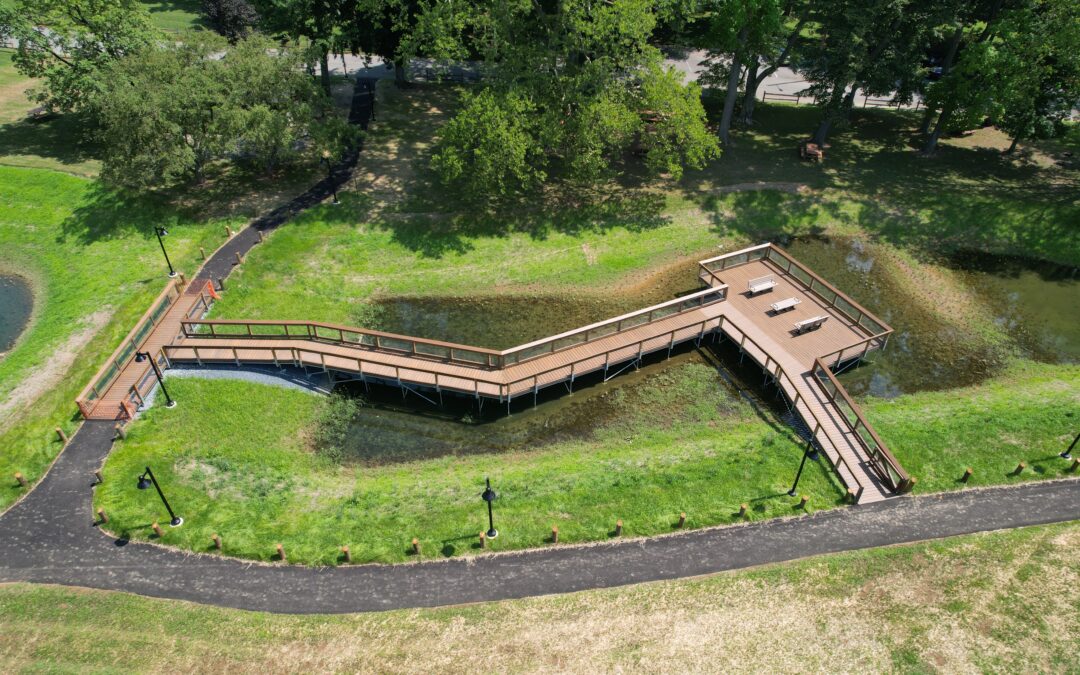Draining wetlands for new construction or in the name of site improvement has been practiced for hundreds of years. However, wetlands removal has affected our environment in ways that now take concerted efforts to mitigate. Let’s explore how ecology and environment are affected, and how we can bring native species back to healthy levels.
What is Biodiversity?
Biodiversity, short for biological diversity, refers to the variety of life forms on Earth and their interactions at all levels, including bacteria, fungi, plants, animals, and humans. Biodiversity supports everything in nature that we need to survive: food, clean water, medicine, and shelter.
Unfortunately, our planet’s biodiversity is increasingly threatened by climate change, exploitation of species, pollution, habitat loss, and invasive species. In a 2019 report by the United Nations, an international coalition of scientists concluded that within the next few decades we could potentially lose over one million known species.
So, what can we do to protect and preserve biodiversity? As individuals, we can respect local habitats, plant local flowers, fruits, and vegetables, support local farms and beekeepers, and conserve our water use. Institutional and regulatory means of conserving biodiversity include combatting wildlife trafficking, mitigating unregulated fishing, halting illegal logging and deforestation, and investing in green infrastructure.
The Positive Impact of Wetlands
Wetlands restoration also plays a vital role in preserving and enhancing biodiversity; according to the U.S. Fish and Wildlife Service, 40 percent of all plant and animal species live or breed in wetlands. The unique natural characteristics of wetlands make them an integral part of our natural infrastructure. These critical habitats provide breeding grounds and sources of food for shellfish, fish, birds, amphibians, and other organisms and play a crucial role in many local fishing economies. Wetlands also provide feeding and resting grounds for migratory birds and create habitat corridors for wildlife populations. Additionally, as detailed by the Environmental Protection Agency, wetlands control erosion, limit flooding, moderate groundwater levels and base flow, assimilate nutrients, protect drinking water sources, and buffer coastal areas from storm surges.
Through the creation of habitats, promotion of native species, purification of water sources, and facilitation of ecological connections, restored wetlands support a wide range of plant and animal species, ultimately contributing to improving the health and expanding the diversity of ecosystems.
Constructed Treatment Wetlands
Wetlands restoration involves restoring a former or degraded wetland’s physical, chemical, or biological characteristics to return its natural functions. Because natural wetlands are so effective at removing pollutants from water that flows through them, engineers and scientists also construct manmade wetlands systems that replicate some of the functions of natural wetlands.
Flyway Excavating recently completed a manmade wetlands project at Long’s Park in Lancaster City. As part of the city’s 2018-2023 Chesapeake Bay Pollutant Reduction Plan, we constructed a wetlands area composed of four basins: a forebay with floating wetland islands, an iron-enhanced sand filter, two constructed marshes, and a pump station that conveys water from Long’s Pond back to the forebay and keeps the water treatment cycle going. To encourage biodiversity, Flyway added native wetland vegetation to the floating islands in the forebay, as well as the upper and lower marsh areas. The islands are an ideal habitat for waterfowl, wading birds, and aquatic wildlife like frogs and turtles to find food, build nests, and simply rest. Within the upper and lower marshes, the wetland vegetation creates a welcoming habitat for birds, turtles, fish, and pollinators.
Learn more about the Long’s Park Water Quality Improvement Project in our Case Study.
At Flyway, conservation and sustainability are our priority.
Want to partner on a wetlands restoration or construction project? Contact us today.
